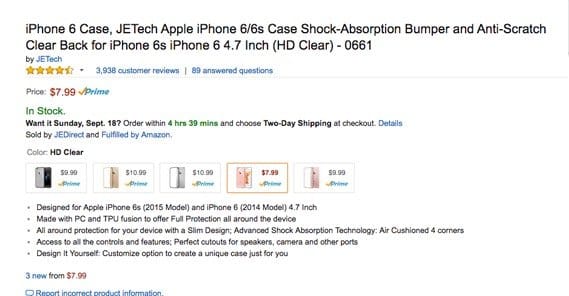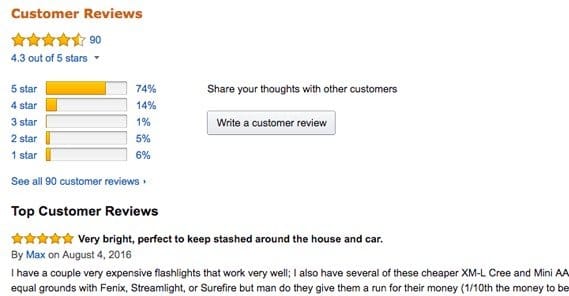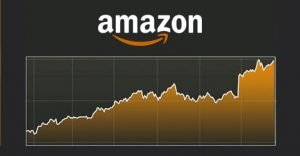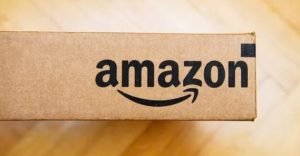5 Ways to Improve the Rankings of an Amazon Product
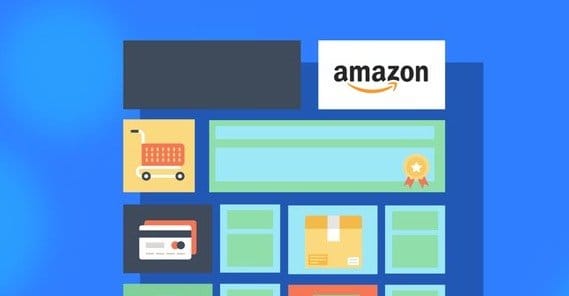
Amazon needs no introduction. The giant retailer is great for more than just their own products, though. In fact, much of what you see “fulfilled by Amazon” is actually sold by a third party through Amazon as a marketplace site. Amazon simply handles priority shipping and monetary transactions, for their own cut of course.
If you want to sell successfully on Amazon, the first thing you’ll have to realize is that you are by far not the only one. Thousands upon thousands of other retailers, large and small, want to sell their own items. Some are handmade and sold individually. Some are contracted from companies in China. Some are essentially drop shipping. Some are large retailers themselves just doing business through Amazon in addition to their own websites.
The second thing you have to realize is that, to find success on Amazon, your product needs to rank highly in search. On top of this, if more than one seller is selling the product – and they will be if it’s not your exclusive right to sell it – you need to be at the top of the list of sellers.
That’s why I’ve put this list together. Ranking on Amazon is not like ranking on Google, where you can publish a bunch of content and optimize some keywords to have a decent shot at it. It’s a very different place, with a very different search algorithm. I’ve done my homework, and I’ve put together a list of the top five things you need to do to improve your Amazon ranking, to sell more and make a better profit.
Understanding A9
A9 is the name of the Amazon search algorithm. It’s not as nicely named as EdgeRank or as ubiquitous as Google’s search algorithm, but it’s equally important in its own realm. A9 governs what products show up where and in what order for what searches. It’s perhaps not quite as sophisticated as Google, but it’s also a much more limited realm with much more concrete pieces of data to use. So, what does Amazon say about it?
I’m going to pull snippets from this page. It’s the official page for the A9 algorithm. First of all, they say they’re hard at work analyzing product pages and traffic patterns, indexing text, and so forth. They attempt to understand their customers, which they do by compiling product histories, browsing habits, and shopping trends. This is why when you browse a product page, you’ll often find an email with deals for that product in the next couple days. It’s what powers the “customers also bought” widget.
The process takes two steps. When a customer enters a query, they first pull all of the relevant results from the Amazon catalog. This can, for some searches, be thousands of products; not a valuable pile, left as is. The second step, then, is to apply filters to be relevant to the query. This is where optimization of product pages, product reviews, and all the rest comes in.
Despite the many factors going into it, relevance for a query can really be boiled down to one thing: what is the customer most likely to purchase? It doesn’t necessarily matter if your product is objectively better; if the competition has a better listing, they’ll probably show up first. This is also why it’s hard to get a product ahead when another company has been selling it for a long time. Even with identical listings, if they have 4,000 positive reviews and you have 0 as a newcomer, they’re going to garner all of the views.
Amazon also doesn’t go out of their way to hide their ranking factors. They want you to know them, so you can optimize your product listings to sell more, because the more you sell, the more they make. Here are the most potent:
- Sales Rank – Primarily, the sheer number of sales a product has on the site. The more copies of an item you’ve sold, the higher your product is going to rank.
- Reviews – Particularly good reviews. A higher average star rating across a larger number of reviews means a higher rank.
- Questions Answered – Amazon has a process whereby users can ask questions about a product if they don’t find the answer in the product listing or in reviews. The more answered questions a product has, the better off the product will be.
- Image Quality – Buyers like to see a product in as much detail as possible before buying. High definition, high quality images help sell products. Always make sure you have at least one image of at least 1000×1000 pixels in size. This allows users to zoom in on it.
- Price – Obviously enough, a product priced reasonably is going to show up higher ranked, particularly if the user changes their search to search by price rather than most relevant. However, extremely low prices are suspicious, so don’t dramatically undercut the competition.
- Child Products – When you go to something like a Kindle case and see 20 different color and pattern options, those are all child options of the parent case. Color options, size options, formats in the case of movies, and so forth – these are all child options. Use these rather than making multiple listings, so you can aggregate traffic, reviews, sales, and all the rest around one listing.
There are some other metrics, but they’re comparatively minor when put up against the list above. You can quickly see why most Amazon product listings look the way they do, are formatted the way they are, and have the options they have.
So, what can you do, bearing all of this in mind, to make your product pages rank higher?
1: Dramatically Expand Your Product Listing Page
The first thing you should do is strive to expand your product listing page as much as possible.
Here are the factors you can expand and improve:
- Optimize your title. If you’ve ever seen a product title with seemingly all the specs for the item in it at once, you know what I’m talking about. Like this has a brand, half a dozen specs, a dozen keywords, and it wraps and is truncated, but that doesn’t matter; it’s all keywords that show up in the search. (Rumor has it, though, Amazon is going to crack down on this sooner or later. Be prepared to shorten all of your product titles as quickly as possible.)
- Features. Anything that could be considered a specification for the item – size, power consumption, technology, anything – should be added as a feature. If necessary, make a table to display details on those specs.
- Description. Treat this as a miniature landing page. Hire a writer to create compelling copy. Showcase the features, add in product images with captions, and make sure to include keywords. However, you only need to include keywords once; as long as they show up, that’s all that’s necessary.
- Include several large size images as well, for the sake of zoom and for user visibility. Make sure one is a compelling single picture of the item. Look at what competitors are using if you need to.
A great product listing is possibly even overkill when you look at it at a glance. The point is to provide as much information as possible.
2: Solicit as Much Positive Feedback as Possible
Now, this is an interesting metric to study. Amazon has gone on record stating that positive feedback does not influence their search algorithm in any way. However, they do track the frequency of negative feedback, typically those 1- and 2-star reviews. They don’t care if the review is a tiny detail or a major product flaw; they don’t look at context, just the existence of the feedback.
A high frequency of negative feedback is going to tank your search ranking and your potential access to the “other sellers” buy box. However, positive feedback does have one application; social proof.
When a user goes to consider buying your product, they’re going to check the reviews. Even if Amazon doesn’t care how much positive feedback you have, users will. As we know from the above, the more sales you get, the better your search ranking will be. Positive reviews influence people to buy, so they indirectly influence your ranking.
The primary way I see brands soliciting reviews is to send out feedback query emails through Amazon’s system a week or two after the product was purchased. This typically gets people to leave a basic review, and most people will end up leaving a 4- or 5-star review even if they’re only merely satisfied.
3: Price Your Product Competitively
What do users care about more than anything? Price. If they find your competitors have a very nice product page for the same exact item you sell, that might convince them to buy, sure. Then they’ll look to see how cheaply they can get the item. This often means simply checking for other sellers with decent feedback who have lower prices, if Amazon didn’t seed them the cheaper price already.
Now, excessively cheap prices make people suspicious. If everyone is selling a $50 blender and you’re pricing it at $5, they have to ask why. Was it a glitch in the system? Was it a mistake in pricing? Is it a clearance or refurbished model? Is it a scam, and there’s a tiny footnote that says you’re just getting a blender box? People are wary of scams.
However, if you price your blender at $45, you’re more likely to get a lot of sales simply by being the cheapest for the product. On top of that, though, you can take advantage of something like SlickDeals. SD is a community that monitors deals from around the web and notifies their users when something nice comes up. You can get a lot of traffic and a lot of conversions from a short burst of a good deal, as long as you advertise it as a good deal and not a mistake. The sales will result in better metrics all around, which helps you get that coveted higher ranking.
4: Seed Questions and Sales
I’m going to be a bit brief with this method, because it’s kind of gray hat. I’ve mentioned that sales help your ranking, but so do questions and answers. If you have a good product description, though, you aren’t going to get many questions. Rather than leave off some pertinent details, however, you can seed them yourself.
What you do is get a friend to use their account to ask questions about your product, then you answer them. If you don’t have a friend willing to do so, you can create a second account, you just need to make sure it’s not tied with your own account and that you use it through a reasonable proxy. An account with organic buying habits is much better, though, so get a friend to do it if at all possible.
You can seed sales as well, but that’s even shadier. Buying your own product through a proxy will get you sales and give you a chance to leave positive feedback, but it also just filters money through Amazon. They get their cut, so you’re essentially just buying feedback. Is it worth it to you? That depends on the size of the cut. If you’re ending up spending anything more than a dollar or two per purchase – that is, in terms of Amazon’s percentage – it’s probably not worth it given the volume you would have to do to compete.
5: Sell Fulfilled by Amazon
Fulfilled by Amazon is the label you get when you let Amazon handle things like shipping. It’s also what gives you the benefits of Amazon Prime. If a user with Prime sees that delicious Prime label on your products but not those of your competitors, they’re almost always going to go with you. The benefits to them are simply so dramatic it’s a no-brainer decision. Prime-enabled products are almost always at the top of search results for that reason. If your competitors are fulfilled by Amazon and you’re not, you might as well not even be in the race.
In order to be fulfilled by Amazon, all you have to do is sign up for it. Amazon will have you send your products to them, where they will be filed away in their warehouses for fulfillment. You don’t have to worry about getting in orders and sending them rush shipping; Amazon handles all of that. They just charge you a per-item fee for each item you sell via FBA.
 ContentPowered.com
ContentPowered.com

